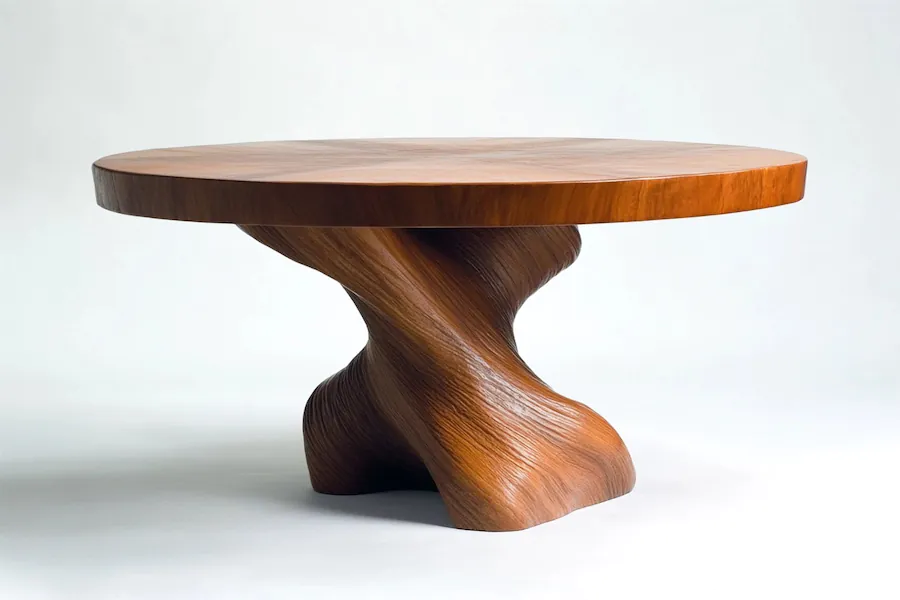Pedestal coffee tables are characterized by a single central support, or pedestal, that upholds the tabletop, offering both stability and a distinctive aesthetic appeal.
Introduction to Pedestal Coffee Tables
Unlike traditional four-legged tables, pedestal coffee tables feature a central base, allowing for more legroom and a streamlined appearance. This design not only enhances the visual flow of a room but also provides a versatile centerpiece that complements various interior styles.
History and Origins of Pedestal Coffee Tables
The pedestal table design dates back to the 17th century, originating in Europe. Initially crafted for dining purposes, these tables were designed to accommodate more guests comfortably by eliminating corner legs. Over time, the pedestal concept was adapted into smaller forms, including coffee tables, to suit evolving interior design trends and functional needs.
Key Features of Pedestal Coffee Tables
- Central Support: The hallmark of a pedestal coffee table is its single, central support, which can vary in design from a simple column to an intricate, sculptural base.
- Material Diversity: These tables are available in a range of materials, including wood, metal, and stone, allowing homeowners to select options that best complement their existing furnishings. For instance, the Alcott Round Farmhouse Coffee Table by Ethan Allen showcases a turned pedestal crafted from solid oak with select oak veneers, highlighting the wood’s natural grain.
- Space Efficiency: The absence of corner legs provides more usable space underneath the table, making it easier to navigate around and place additional seating if necessary.
Applications of Pedestal Coffee Tables
Pedestal coffee tables are versatile and can be incorporated into various settings:
- Living Rooms: Serving as a central piece that anchors seating arrangements, these tables add character and a modern touch to the space.
- Offices: In reception areas or executive lounges, a pedestal coffee table can serve as a stylish focal point, offering a surface for magazines or refreshments.
- Boutiques and Showrooms: Retail spaces can use these tables to display products in an eye-catching manner, enhancing the overall aesthetic of the environment.
Considerations When Choosing a Pedestal Coffee Table
When selecting a pedestal coffee table, consider the following factors:
- Size and Proportion: Ensure the table’s dimensions are appropriate for your space, allowing for comfortable movement around it and proportional balance with surrounding furniture.
- Material and Finish: Choose a material and finish that align with your interior décor and lifestyle needs. For example, a glass-top table may offer a sleek look but require more maintenance, while a wooden table might provide durability and a classic appeal.
- Stability: Given the central support design, it’s essential to ensure the pedestal base is sturdy enough to prevent tipping, especially in households with children or pets.
Conclusion
Pedestal coffee tables blend classic design with modern functionality, making them a versatile choice for various interior settings. Their unique structure not only adds visual interest but also offers practical benefits, such as increased legroom and space efficiency. By carefully considering factors like size, material, and stability, you can select a pedestal coffee table that enhances both the aesthetic and utility of your living space.
